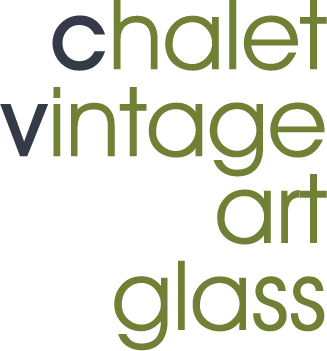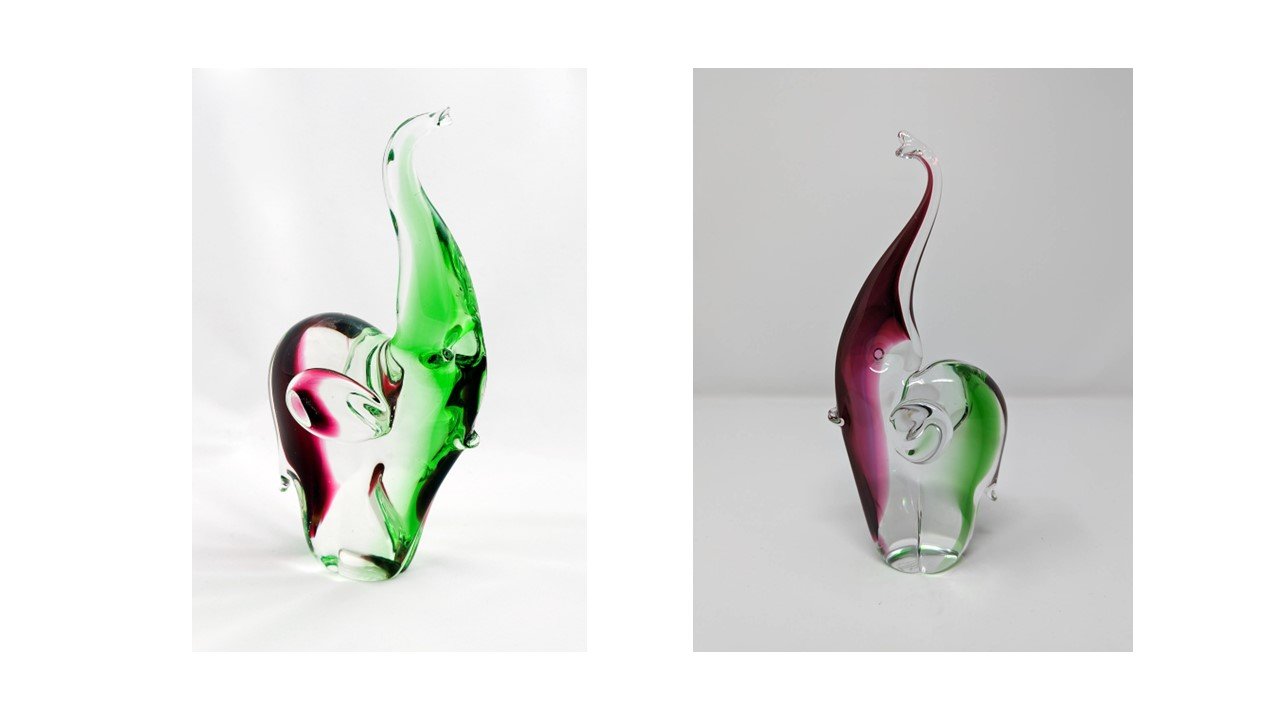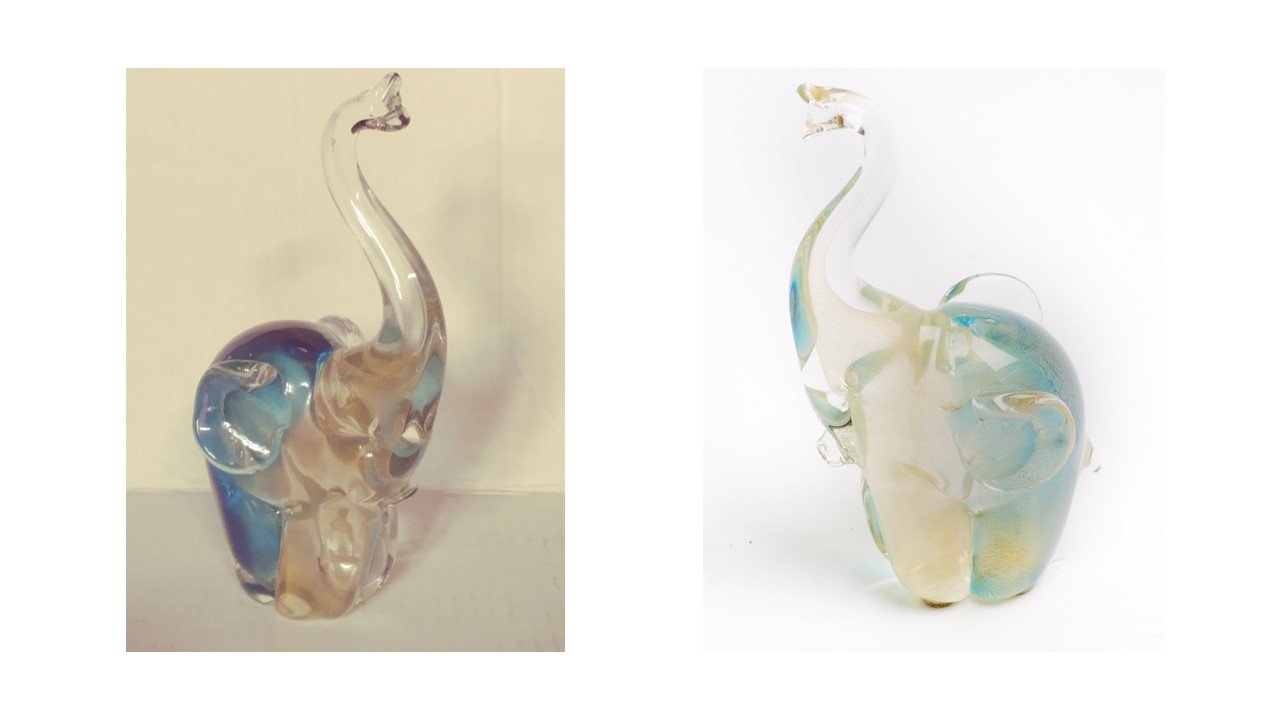The Chalet Elephant Figurines
August 12th is World Elephant Day. It was launched in 2012 to bring attention to the urgent plight of Asian and African elephants. While the elephant is loved, revered and respected by people and cultures around the world, it teeters on extinction. So, I thought it would be respectful to honour it through an article and hopefully raise some awareness of this special day. And the best way to do this seemed to be through an article on the Chalet elephants.
Are you an “elephant trunk up or an elephant trunk down” person? Both positions are believed to be positive. An elephant trunk pointed upward signifies energy and is said to bring luck, prosperity and invite kindness. Elephants raise their trunks to greet friends and denote happiness. The trunk's downward orientation represents life and the ability to conquer obstacles. It is also believed that if an elephant has its trunk down, it is amassing the energy needed to face a challenge.
Chalet was obviously a “trunk up” company. They did quite a few distinctive styles and poses but all have the trunk up. To date, we have no production/inventory numbers for the Chalet elephant figurines. Come along with me on a short “Baby Elephant Walk” to check out some “Chalet Jumbos and Dumbos.”
The iconic pose:
Most often found in a 2-tone colour placement. This green/cranberry colour combination is a rare colouring.
Another rare colour combination.
From the collection of 50 Shades member Kevin Hall.
This iconic Chalet elephant figurine was done in a wide variety of colours. Ranging from the rare, as above, to the more standard – blue/amber, bright yellow/emerald-green, blue/olive green and blue/emerald-green are the most common. However, trunk/rear colour placement was not standardized. How lucky are we that we get to see an example of this through comparing another rare cranberry/green elephant (figurine on the right is also from the collection of 50 Shades member Kevin Hall) to the one above
Cranberry rear on left with cranberry trunk on right. This variation in colour placement of the same two colours is typical and to be expected.
Oh dear – you best be not telling anyone that you’re seeing pink elephants!
This rare solid cranberry coloured pink elephant is etched “Chalet Canada.”
This Chalet elephant definitely is a “jaw dropper”. To date, I know of only one other and it also retains the same marking.
If that one wasn’t startling enough, prepare for further “shock and awe” with a signed uranium!
This trunk is being raised in the collection of 50 Shades member Cindy Bishop Loughlin.
The rare just keep on coming. Opaline:
Lead arsenate was added to clear crystal molten glass mixture in the vat to create a milky, white appearance. The clear glass loses its transparency and becomes opaque. Opaline glass was used not only in two complete and distinctive hand moulded Chalet lines but also to create some very memorable stand-alone animal figurines. We have also seen polar bears, rabbits, roosters, and cats that are fully or partially opaline. I am fortunate to have this piece in my collection. Doubly so because of its rare marking. This is a very seldom seen hang tag.
Both the opaline and cranberry elephant are etched “Chalet Canada.” And, as you can plainly see, the cranberry pachyderm also retains its original Chalet sticker. This very rare pair from the collection of 50 Shades member Brenda Ross Coombs.
And “Smoke.” Although this six-inch elephant figurine is featured in a Riekes catalogue in the “Animal Assortment 82704”, it is the only one, to date, that we have actually found.
Although, as of yet, we have found no Chalet bullicante elephant figurines, the company did produce did silver foil and gold leaf pachyderms. In Chalet silver foil and gold leaf animal figurines, small ultra-thin sheets of these metals were used. These silver or gold sheets were made by the precious metals having been beaten into an extremely thin leaf-like state of about 0.15 micron in width. To give you an idea of such a thin surface, this reflects about 20 grams of the precious metal covering six square meters. The sheets were then cut into small squares of about 8 cm. To infuse this gold or silver into the form, the Maestro started by rolling these small 24K gold or .925 silver sheets onto the hot glass mass during the early stage of glass-blowing. Once the gold leaf or silver foil covered most of the gather, he added a layer of clear crystal. Then, when he began to blow the glass, the metal sheet within the layers broke into smaller pieces which dispersed throughout the piece. This resulted into objects having scattered metallic pieces if differing sizes and shapes captured inside the form producing shimmering effects. These may appear close to the surface or submerged within deeper layers of clear crystal. There is no uniformity from piece to piece.
Gold filled. Note the different shades of blue. Both etched “Chalet Canada.” The gold filled is more often seen than the silver filled. Rare.
The blue and silver filled figurine is exceedingly rare.
The silver in this figurine overlays bright green. This is the only one, to date, of which I know. Once again, from Kevin Hall’s amazing collection of Chalet elephants.
Chalet’s major American distributor, Riekes Crisa (Omaha), carried both small and large clear crystal elephant figurines in both the 1976 and later undated catalogue.
In the 1976 catalogue, this large figurine is listed as “3043-69 elephant” and shown only in an 8” size. Photo courtesy of the Cornwall Community Museum.
In this later undated catalogue, in the third row, note that the “3043-69 elephant” is now listed as “3043-69C elephant” and still in an 8” as an 8” piece but there is now a second photograph (2 pictures over) showing “Indian elephant 7618-69 6 inches” and “Indian elephant 7619-69 8 inches.” Distinctions without too much of a difference!
Please also note that this style of figurine was also made by former Chalet artists, after Chalet’s closure, at Angelo Tedesco’s Christallerie Chalet Vie et Art in Saint Zotique, Quebec. Rossi Artistic Glass also produced this figurine.
In addition, Riekes carried three assorted styles of smaller Chalet elephant figurines as well.
All are production pieces and quite readily found.
We have found them retaining all three of the Chalet/Riekes markings.
And with the generic “Riekes Canada” label that was used after Chalet’s closure.
Photograph courtesy of 50 Shades member Cathy Young.
This wonderful “parade” of elephants from the collection of 50 Shades member Matthew LeDrew. Matthew’s various Chalet elephants (clear crystal, 2-tone, smoke and avventurina) march along perfectly with those from other makers.
Lorraine Glass Industries, EDAG, Mosaic Artistic Glass, Altaglass, and Rossi Artistic Glass also produced elephant figurines.
As I noted at the start of this article, World Elephant Day is an international annual event on August 12, dedicated to the preservation and protection of the world's elephants. Please do what you can to help this endeavor. A link to some information about organizations working to educate and protect. https://impactful.ninja/best-charities-for-protecting-elephants/
I don’t think any of us realize what it would mean to only be able to see or remember these creatures through glass figurines.



















